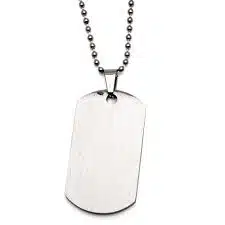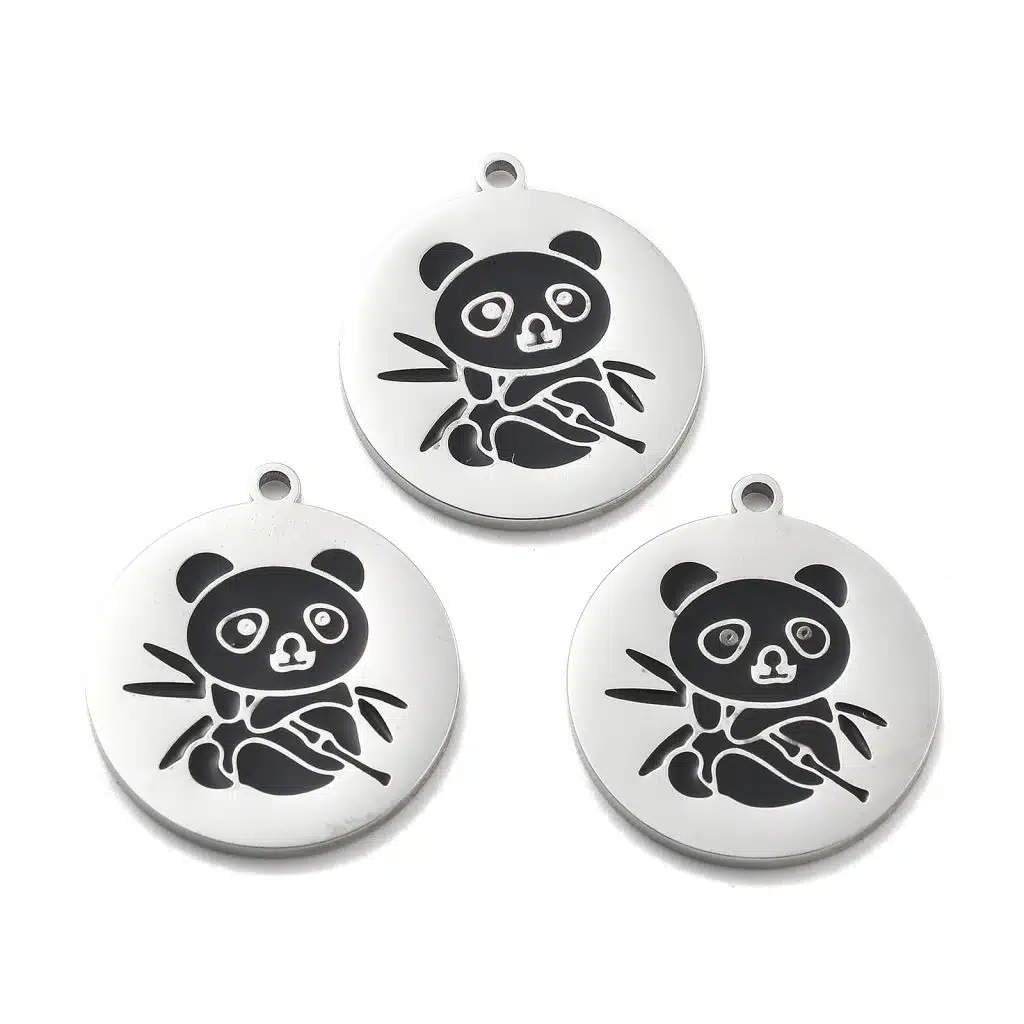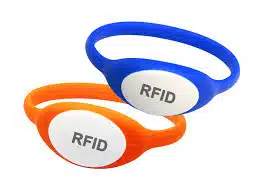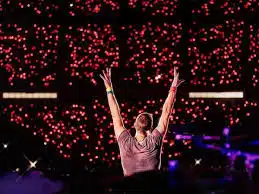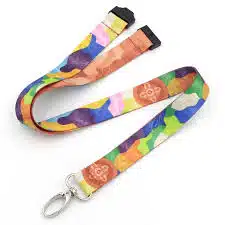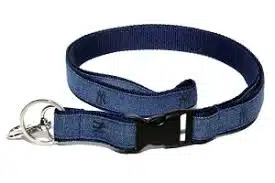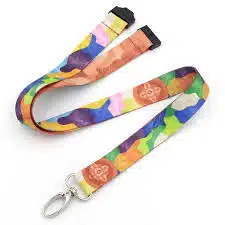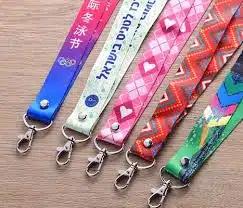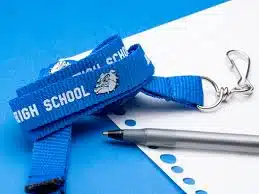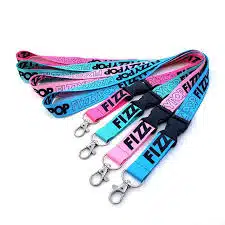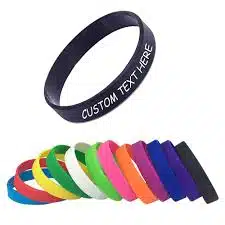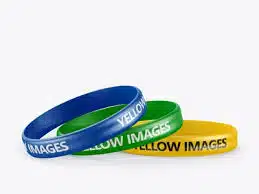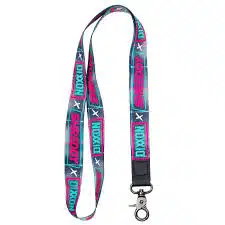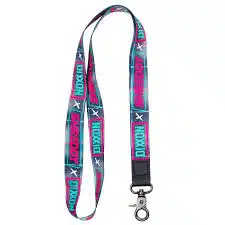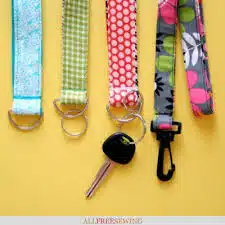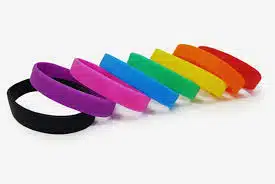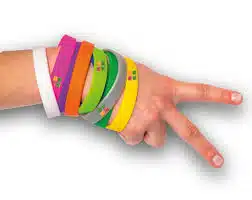From bustling music festivals to charity fundraisers, from corporate events to daily fashion statements, silicone wristbands have become a ubiquitous accessory in modern life. These simple, flexible bands made from high-quality silicone offer far more than just a trendy look—they’re a versatile, practical, and impactful tool with a wide range of benefits. Whether you’re a business owner looking to boost brand visibility, an organizer planning an event, a parent seeking a safe accessory for your child, or an individual wanting a durable daily wear item, silicone wristbands deliver on multiple fronts. In this article, we’ll explore the key advantages of silicone wristbands, shedding light on why they’ve earned their place as a go-to choice for millions worldwide.
1. Unmatched Durability: The Long-Lasting Advantage of Silicone Wristbands
One of the most standout benefits of silicone wristbands is their exceptional durability. Unlike flimsy rubber bands, fabric bracelets, or plastic accessories that fray, snap, or degrade quickly, durable silicone wristbands are built to withstand the test of time and tough conditions.
Silicone, a synthetic polymer known for its resilience, is highly resistant to wear and tear. It can handle daily use without showing signs of damage, even with constant movement, friction, or exposure to rough surfaces. Whether you’re hitting the gym, working outdoors, or chasing kids around the park, a silicone wristband will stay intact, maintaining its shape and structure.
Extreme temperatures are no match for silicone, either. Unlike some materials that become brittle in cold weather or melt in heat, silicone remains stable across a wide range of temperatures—from freezing cold to scorching heat. This makes silicone wristbands ideal for outdoor activities, whether you’re skiing in the mountains, hiking in the desert, or attending a summer festival under the sun.
Waterproof and weather-resistant, these wristbands are also perfect for water-based activities. Swimmers, surfers, and beachgoers can wear them without worrying about damage from chlorine, saltwater, or rain. Unlike fabric bracelets that absorb water and become soggy or paper wristbands that disintegrate, waterproof silicone wristbands stay dry, clean, and functional, even after hours in the water.
The longevity of silicone wristbands means they outlast many other accessories. A single silicone wristband can last for years, making it a cost-effective choice compared to disposable alternatives that need frequent replacement. Whether used for daily wear, sports, or outdoor adventures, durable silicone wristbands prove their worth through their ability to endure.
2. Endless Customization: Tailored to Your Unique Needs
Another major benefit of silicone wristbands is their incredible customization potential. Unlike one-size-fits-all accessories, customizable silicone wristbands can be tailored to fit any message, brand, or style, making them a favorite for businesses, organizations, and individuals alike.
When it comes to design, the options are virtually limitless. You can choose from a vast array of colors—from bold primary hues to subtle pastels, and even multi-colored or gradient designs. This flexibility allows you to match brand colors, event themes, or personal preferences perfectly. For example, a charity raising awareness for breast cancer might opt for pink wristbands, while a tech company could use their signature blue and white palette.
Beyond color, customizable silicone wristbands can feature logos, slogans, messages, or artwork. Whether you want to showcase a company logo, spread a motivational quote, or promote a cause, the design can be printed, debossed (indented), embossed (raised), or even glow-in-the-dark. Debossed wristbands, where the design is pressed into the silicone, offer a sleek, long-lasting look, while printed wristbands allow for intricate details and full-color graphics. This level of customization ensures that your message stands out and resonates with your audience.
Size is another customizable feature. Silicone wristbands come in various sizes, from small bands for children to larger options for adults, ensuring a comfortable fit for everyone. You can also choose the width of the band—narrow bands for a subtle look or wider bands for more prominent messaging.
This versatility makes customizable silicone wristbands ideal for a range of uses. Businesses use them as promotional tools to increase brand recognition, schools create them for spirit weeks or fundraisers, and events like marathons or concerts use them for participant identification. Even individuals can design personalized wristbands as gifts, team symbols, or personal mementos.
The ability to create a truly unique product means that silicone wristbands can adapt to any goal, whether it’s building brand loyalty, raising awareness, or celebrating a special occasion. With customizable silicone wristbands, your vision can come to life in a tangible, wearable form.
3. Cost-Effective: Affordable for Any Budget
For businesses, organizations, or individuals looking to maximize value, affordable silicone wristbands offer an unbeatable cost-to-benefit ratio. Compared to other promotional items or accessories, silicone wristbands provide exceptional value, especially when purchased in bulk.
Bulk pricing is a key factor in their affordability. Most suppliers offer significant discounts when ordering large quantities, making affordable silicone wristbands a budget-friendly choice for events, campaigns, or giveaways. For example, a school hosting a fundraiser can order hundreds of wristbands at a low per-unit cost, ensuring they stay within budget while still providing a memorable item for participants.
The long lifespan of silicone wristbands further enhances their cost-effectiveness. Unlike flyers, stickers, or other disposable promotional items that are often discarded quickly, silicone wristbands are worn and kept, meaning your investment continues to deliver value long after the initial purchase. A single wristband can act as a moving billboard for years, making the return on investment (ROI) far higher than short-lived alternatives.
Additionally, the customization process for affordable silicone wristbands is often cost-effective. Even with intricate designs or multiple colors, the production cost remains low, especially when ordered in bulk. This makes customizable silicone wristbands accessible to small businesses, nonprofits, and community groups with limited budgets.
When compared to other branded items like t-shirts, hats, or water bottles, silicone wristbands are lightweight and inexpensive to ship, reducing additional costs. Their compact size also makes them easy to distribute at events, trade shows, or in stores, further adding to their practicality and affordability. For anyone looking to make an impact without overspending, affordable silicone wristbands are a smart choice.
4. Hypoallergenic and Safe: Suitable for All Ages
Safety is a top priority for any accessory, and silicone wristbands excel in this area. Hypoallergenic silicone wristbands are designed to be gentle on the skin, making them safe for people of all ages—including children, individuals with sensitive skin, and those with allergies.
Silicone is a non-toxic, inert material that doesn’t contain harmful chemicals like BPA, phthalates, or latex. Latex allergies are common, affecting millions of people worldwide, but hypoallergenic silicone wristbands are completely latex-free, eliminating the risk of allergic reactions. This is a crucial benefit for schools, childcare centers, and events where participants may have unknown allergies.
In addition to being latex-free, silicone is resistant to bacteria growth, making hypoallergenic silicone wristbands a hygienic choice for daily wear. Unlike fabric bands that can trap sweat and dirt, silicone is easy to clean with soap and water, ensuring it stays fresh even with extended use. This makes them ideal for athletes, kids, or anyone who wears their wristband all day.
Silicone is also soft and smooth, with no sharp edges or rough surfaces that could irritate the skin. The flexible material conforms to the wrist without pinching or rubbing, even during active movement. Parents can feel confident letting their children wear silicone wristbands, knowing they’re safe, comfortable, and free from harmful substances.
Many hypoallergenic silicone wristbands are also FDA-approved for contact with skin, further validating their safety. This approval is especially important for medical alert wristbands, which are worn by individuals with health conditions to communicate vital information to medical professionals. The peace of mind that comes with using a safe, skin-friendly accessory is invaluable, making silicone wristbands a top choice for families and organizations alike.
5. Eco-Friendly: A Sustainable Alternative to Disposable Accessories
In an era where sustainability is increasingly important, eco-friendly silicone wristbands stand out as a responsible choice. Unlike single-use plastics or disposable accessories that contribute to waste, silicone wristbands are reusable and often recyclable, aligning with green initiatives and reducing environmental impact.
Silicone is a durable material that can be reused countless times, eliminating the need for frequent replacements. This reusability means fewer resources are consumed in production and less waste ends up in landfills. For example, a single silicone wristband can replace dozens of disposable paper wristbands used at events, significantly cutting down on trash.
Many manufacturers now offer eco-friendly silicone wristbands made from recycled silicone or plant-based silicone, further reducing their carbon footprint. These sustainable options maintain the same durability and quality as traditional silicone wristbands but with a lower environmental impact. By choosing recycled silicone, businesses and organizations can showcase their commitment to sustainability, appealing to eco-conscious consumers and stakeholders.
Unlike plastic accessories that break down into microplastics over time, silicone is stable and doesn’t release harmful particles into the environment. When properly disposed of, some silicone products can be recycled through specialized programs, extending their lifecycle even further. This makes eco-friendly silicone wristbands a better choice than plastic bracelets, which often end up as litter or in oceans, harming wildlife.
The reusable nature of silicone wristbands also aligns with the growing trend of minimalism and reducing waste. People are increasingly seeking products that serve multiple purposes and last long-term, and silicone wristbands fit this mindset perfectly. Whether used as a promotional tool, fashion accessory, or identification band, their ability to be reused again and again makes them a sustainable choice for the environmentally conscious. By opting for eco-friendly silicone wristbands, you’re not only getting a practical accessory but also contributing to a greener planet.
6. All-Day Comfort: Designed for Wearability
Comfort is key when it comes to any accessory, and silicone wristbands deliver exceptional comfort that keeps people coming back. The soft, flexible nature of silicone makes silicone wristbands a pleasure to wear, even for hours on end.
Silicone is lightweight, so you’ll barely notice you’re wearing a wristband. Unlike heavy metal bracelets or rigid plastic bands that feel cumbersome, silicone wristbands are so light they can be worn all day without weighing down the wrist. This makes them ideal for daily use, whether you’re at work, school, or the gym.
The flexibility of silicone allows the wristband to move with you, adapting to your movements without restriction. Whether you’re typing, playing sports, or lifting weights, the wristband won’t get in the way or cause discomfort. This is a major benefit for athletes, who need accessories that can keep up with their active lifestyle, and for anyone who dislikes bulky or restrictive jewelry.
Silicone wristbands also come in a range of sizes, ensuring a snug yet comfortable fit for wrists of all shapes and sizes. They’re stretchy enough to slide on and off easily but retain their shape to stay securely in place. Unlike adjustable bands with clasps that can dig into the skin, silicone wristbands provide a smooth, even fit that feels natural.
The material’s ability to resist sweat and moisture adds to its comfort. Silicone doesn’t absorb sweat, so it won’t become sticky or uncomfortable during workouts or hot weather. It also dries quickly, making it perfect for swimmers, hikers, or anyone who spends time outdoors.
For people who wear wristbands for extended periods—like event staff, volunteers, or medical alert users—comfort is non-negotiable. Silicone wristbands excel in this area, offering a wear experience that’s so comfortable, many users forget they’re even wearing them.
7. Versatile Beyond Measure: For Every Occasion and Purpose
Silicone wristbands are far more than just fashion accessories—their versatility makes them suitable for a wide range of uses, from practical tools to powerful promotional tools. This adaptability is one of their greatest benefits, as they can serve multiple purposes across different settings.
Promotional silicone wristbands are a staple in marketing and branding. Businesses of all sizes use them to increase brand visibility, as they’re worn daily and act as “moving billboards.” A customer wearing a wristband with your logo or slogan spreads awareness everywhere they go, from the grocery store to the gym. Charities and nonprofits also use them to raise awareness for causes, with iconic examples like the yellow “Livestrong” wristbands that became a global symbol for cancer awareness.
Event Access and Identification
At concerts, festivals, sports games, and conferences, silicone wristbands are used as access passes. They’re durable, hard to counterfeit, and easy to distribute, making them a secure alternative to paper tickets or lanyards. Event organizers can customize wristbands by color or design to differentiate between VIPs, general admission, or staff, streamlining entry and enhancing security.
Medical and Safety Uses
Medical alert wristbands are a critical application of silicone wristbands. These bands feature important information like allergies, chronic conditions, or emergency contacts, ensuring medical professionals have instant access to vital details in an emergency. The durability and visibility of silicone wristbands make them ideal for this life-saving purpose.
Team and Group Identification
Schools, sports teams, and clubs use silicone wristbands to build unity and identify members. A soccer team might wear matching wristbands to show team spirit, while a school could use them to distinguish between grades or clubs during events. This fosters a sense of belonging and makes group members easily recognizable.
Fashion and Personal Expression
Beyond practical uses, silicone wristbands have become a fashion statement. Many people wear them as part of their everyday style, mixing and matching colors and designs to express their personality. Limited-edition or artist-collaborated wristbands are even collected by enthusiasts, adding a fun, trendy element to their appeal.
The versatility of silicone wristbands means they can adapt to any need, making them a valuable tool in nearly every industry and setting. Whether used for promotion, safety, unity, or style, their ability to serve multiple purposes is unmatched.
8. Waterproof and Weather-Resistant: Ready for Any Environment
Silicone wristbands are designed to thrive in all kinds of conditions, thanks to their waterproof and weather-resistant properties. Unlike many accessories that are ruined by water, sweat, or harsh weather, waterproof silicone wristbands hold up no matter what the elements throw at them.
Waterproof by nature, silicone doesn’t absorb water or degrade when exposed to moisture. This means you can wear your wristband while swimming, showering, or caught in the rain without worrying about it fading, stretching, or falling apart. For swimmers, surfers, or anyone who spends time in the water, this is a game-changer—no more removing your favorite wristband before jumping in.
In addition to being waterproof, waterproof silicone wristbands are resistant to UV rays, which can cause colors to fade over time. This makes them perfect for outdoor events, beach days, or any activity under the sun. Even after months of exposure to sunlight, the colors remain vibrant, ensuring your message or design stays visible.
Extreme weather conditions like snow, wind, or high humidity don’t affect silicone wristbands either. They won’t crack in cold temperatures or become sticky in humidity, maintaining their shape and functionality year-round. This reliability is especially important for outdoor workers, hikers, or anyone who spends significant time outdoors.
The waterproof and weather-resistant properties of silicone wristbands also make them easy to clean. A quick rinse with water is all it takes to remove dirt, sweat, or grime, keeping them looking fresh and new. This low-maintenance feature adds to their practicality, making them a hassle-free accessory for busy lifestyles.
Whether you’re an outdoor enthusiast, an athlete, or just someone who wants a worry-free accessory, waterproof silicone wristbands deliver the durability and reliability needed to withstand any environment.
9. High Visibility: Spreading Messages Far and Wide
The visibility of silicone wristbands is another key benefit, especially for promotional or awareness campaigns. Unlike hidden accessories or easily ignored ads, silicone wristbands are worn on the wrist—a highly visible spot—ensuring your message gets noticed by everyone the wearer encounters.
The bright colors and bold designs of silicone wristbands naturally draw attention. Whether someone is at the grocery store, gym, or a social gathering, their wristband stands out, sparking curiosity and conversation. This makes them far more effective than traditional promotional materials like flyers or stickers, which are often overlooked or discarded.
For businesses, this high visibility translates to increased brand exposure. Every time a customer wears a wristband with your logo, they’re promoting your brand to everyone around them. This “word-of-mouth” marketing is powerful, as people are more likely to trust recommendations from peers than traditional ads. A single promotional silicone wristband can reach hundreds of people over its lifespan, making it a cost-effective way to expand brand reach.
Charities and nonprofits also benefit from the visibility of silicone wristbands. A wristband promoting a cause like environmental conservation or mental health awareness can start conversations, educate others, and inspire action. The simple act of wearing a wristband becomes a way to advocate for change, with the band acting as a constant reminder of the cause.
Even for personal use, visibility matters. Medical alert wristbands need to be easily seen by medical professionals in an emergency, and team wristbands should make group members recognizable at a glance. The high visibility of silicone wristbands ensures they fulfill these critical roles effectively.
In a world where attention spans are short, the ability to create a visible, memorable message is invaluable. Silicone wristbands excel in this area, using their prominent placement and eye-catching designs to ensure your message is seen and remembered.
Conclusion: Why Silicone Wristbands Are a Smart Choice
Silicone wristbands have earned their popularity through a combination of durability, customization, safety, and versatility. From their ability to withstand years of wear and harsh conditions to their endless design possibilities, silicone wristbands offer benefits that cater to individuals, businesses, and organizations alike.
Whether you’re looking for a cost-effective promotional tool, a safe accessory for your child, a durable medical alert band, or a stylish way to express yourself, silicone wristbands deliver. Their hypoallergenic, eco-friendly, and waterproof properties add to their appeal, making them a responsible and practical choice for any need.
The next time you’re in search of an accessory that combines functionality, style, and value, consider the many benefits of silicone wristbands. They’re more than just bands—they’re durable, customizable, and impactful tools that stand the test of time.
Click here for more information about wristbands: https://www.topwristband.com
Reference Website:https://www.opb.org/news/article/draft-silicone-bracelets-blog-post/
